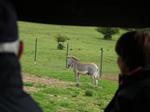
Get the foundation knowledge to kick start your career
Study Zoo Keeping today and gain a foundation knowledge and skills for working as a Zoo Keeper. You will cover the many aspects of zoo keeping such as:
- Animal Behaviour
- Animal Health Care
- Environmental Enrichment
- Feed & Nutrition
- Training and Behaviour Management
- Captive Breeding
Improve your career and employment possibilities to work with wildlife, in zoos, wildlife parks, reserves.